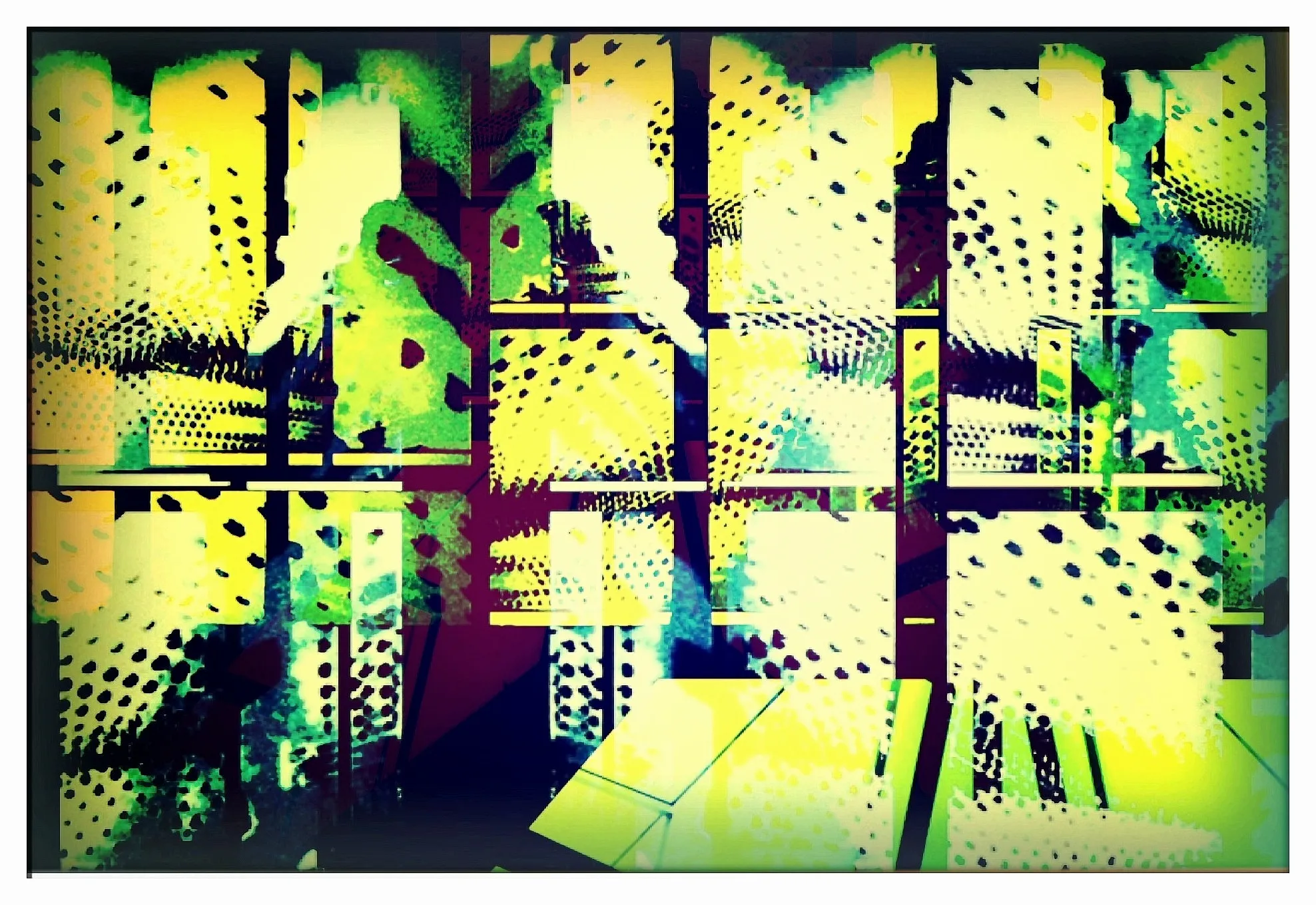The Industrial Revolution

The Industrial Revolution uses halftone patterns, toxic color palettes, and fractured grids to critique the ongoing effects of industrialization. It reflects how mechanization reshaped not only labor and landscape but also perception—fragmenting both bodies and meaning into systems still with us today.
In The Industrial Revolution, the artist reconstructs the visual logic of mass production to interrogate the systems it left behind. The work is a digital composition, yet it pulses with the textures of analog reproduction—halftone dots, screen misalignments, and a modular grid that recalls the rigid structure of industrial architecture. At first glance, its rhythm feels mechanical, almost hypnotic. Look closer, and those patterns slip: alignments fracture, colors bleed, and visual order dissolves into noise. This formal tension becomes the central thesis of the piece—progress is never seamless, and systems meant to organize can just as easily dehumanize.
The halftone screen, a relic of mechanical printing, becomes here a symbol of both technological triumph and constraint. Historically used to translate photographs into printable form, its dots stand in for the standardization and atomization of experience. The artist embraces this vocabulary, not to mimic the past, but to expose how its visual and ideological machinery continues to operate. The repetition and misregistration are not flaws, but intentional disruptions—glitches that remind us systems break, and within those breaks, meaning is revealed.
Color serves as a critical lens. A palette dominated by electric greens, jaundiced yellows, and bruised violets evokes not only industrial signage and chemical spills but the synthetic glow of screens and circuitry. These hues are at once alluring and repellent, embodying the dual legacy of the Industrial Revolution: dazzling innovation shadowed by toxicity—social, environmental, and perceptual. The sickly brightness suggests not vitality, but fallout; not clarity, but distortion.
Figures, if present at all, are spectral. In the haze of halftone fields, the suggestion of a human form flickers briefly before dissolving. It is a haunting absence—one that echoes the erasure of the laboring body in the logic of mechanization. Workers are rendered invisible, their efforts abstracted into units of productivity. The image makes this erasure literal, showing us a system that runs with no clear author, and whose products—like the image itself—are detached from origin and intent.
While rooted in 19th-century industrial aesthetics, the work insists on its relevance today. It draws a direct line from the era of steam and steel to that of algorithms and automation. The visual language of mass printing becomes a proxy for the logic of modern data systems: repetitive, scalable, opaque. The glitches are no longer mechanical errors, but the byproducts of a digital world that operates by similar rules—breaking information into fragments, masking labor behind interfaces, reducing individuals to units of output.
The Industrial Revolution does not offer nostalgia or resolution. Instead, it presents a fractured history as an active system—one we live within, one that shapes our ways of seeing. By layering the aesthetic residues of industrialization with contemporary digital dissonance, the artist challenges us to confront the machinery still grinding beneath the surface of our image-saturated world. It is not a picture of a past moment, but a portrait of the systems we have inherited—and the ones we must now learn to see.
Essay written: May 2025